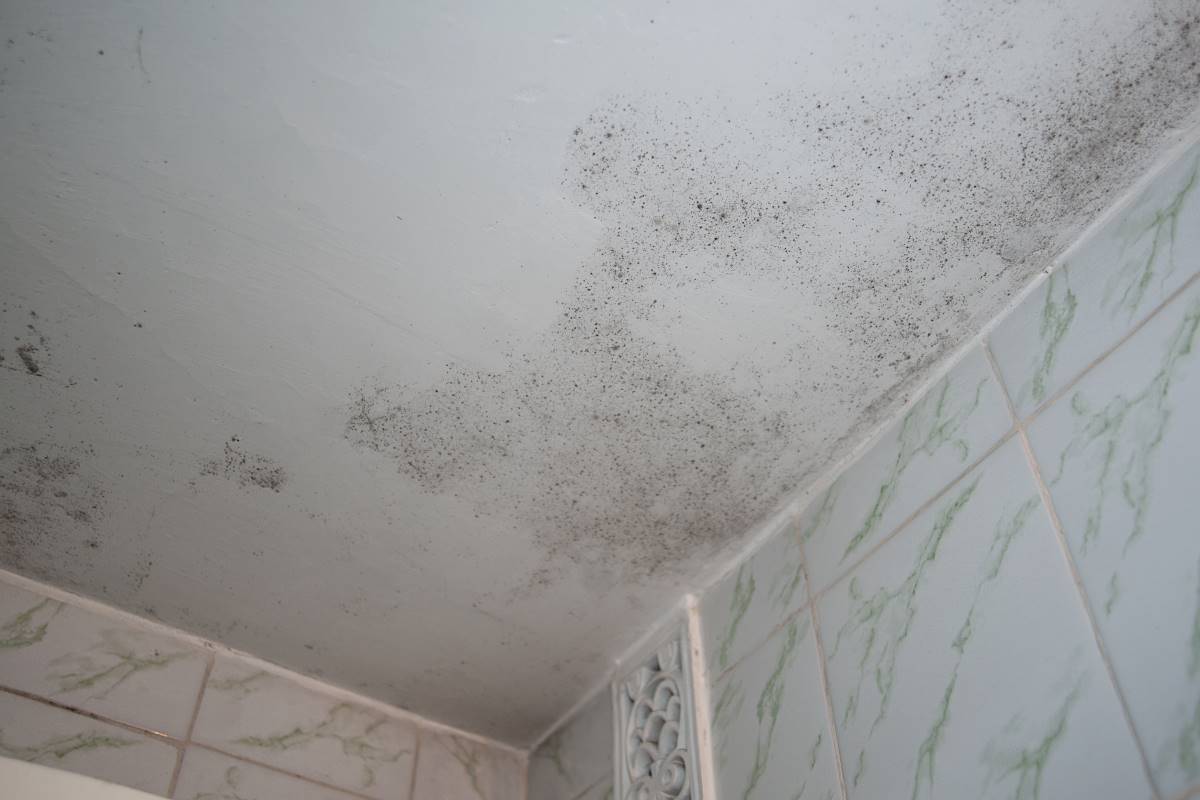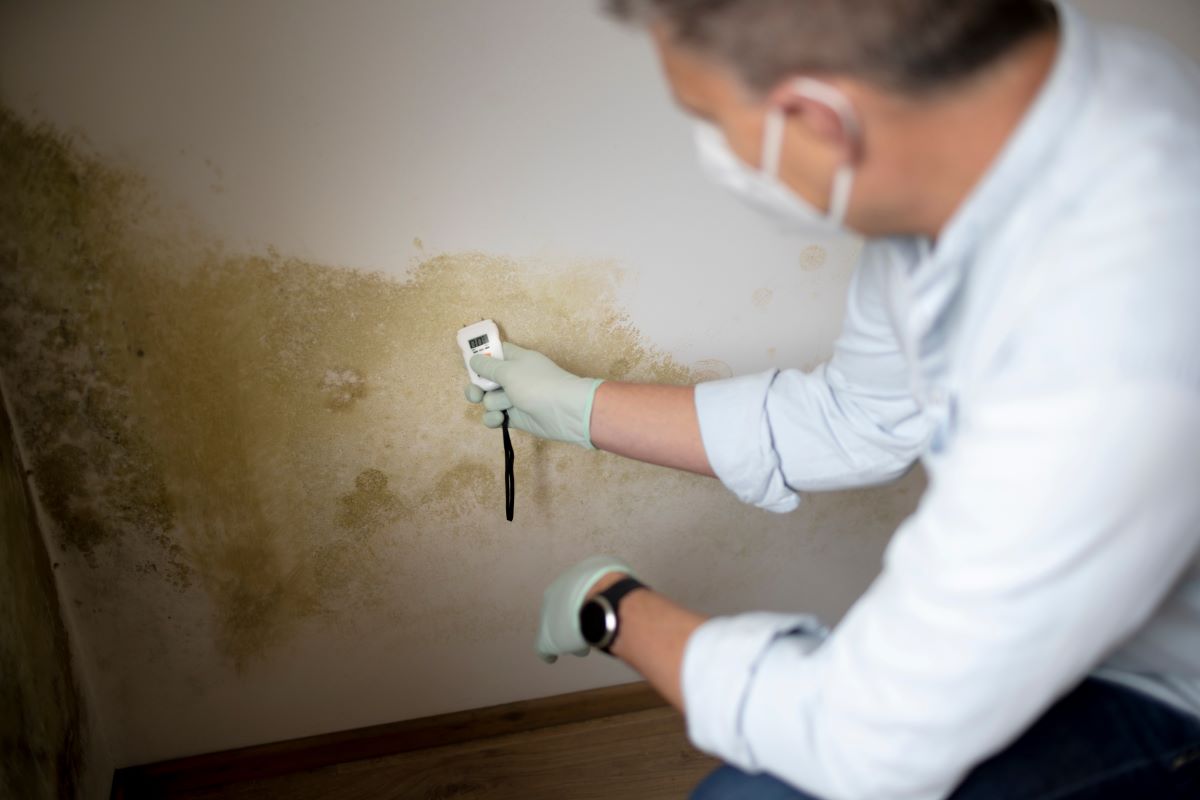The bathroom is often one of the most humid rooms in a home. In many cases, moisture in the bathroom is not a problem, but an abundance of moisture that cannot leave often brings negative consequences. Do you suffer from an excessively damp bathroom? You're not alone: in Flanders many bathrooms suffer from moisture problems such as condensation, ventilation problems, rising damp, damp floor, leaks or a musty smell.
Recognizing moisture in the bathroom
A bathroom is an important room in your home. It is the room in which you get ready for the day, shower, go to the toilet or perhaps cut your own hair. In other words, the bathroom is a place where you should like to be and where you would rather not have moisture problems.
An ideal humidity level for a bathroom is between 40% and 60%. Is the value higher than that? Then chances are that sooner or later you'll have moisture spots and -problems will experience. You can usually recognize an excessively damp bathroom by the following signs:
- Colored spots on the wall
- Mold spots
- Loose stucco, wallpaper or grouting
- A bad and unpleasant odor
- Drops on the windows and walls
When you notice these issues in your bathroom, it's a good idea to get a moisture expert enable.
Consequences of a damp bathroom
If you notice the previous symptoms in your bathroom but do nothing about them, it can lead to all kinds of negative consequences. We list the main ones:
- Consequences for your health. Consider frequent colds, respiratory problems or rashes.
- Implications for the temperature in the home. A damp room feels cooler is harder to heat. You will use more energy to get to a comfortable temperature.
- Consequences for your house. Moisture in the bathroom not only creates an unpleasant smell, it can also damage your furniture and home.

Causes of an excessively damp bathroom and their solutions
There are several reasons for moisture in the bathroom, each with its own moisture treatment. It is recommended to use a moisture expert in order to determine the exact cause. When the exact cause is known, a correct solution can also be provided. The most common causes are:
1. Condensation moisture
Condensation is a common cause of a damp bathroom, as condensation is often caused by human activities. Consider, for example, the breathing or perspiration of the occupants. Showering or taking a bath can also increase humidity. If you do not ventilate the room adequately, this moisture cannot leave. This results in condensation on the walls and ceiling. Over time, this can lead to damp spots and mold on silicone and joints.
The ideal solution to condensation moisture is to make your bathroom the best it can be ventilate. This can be done by taking action on your own, but also a mechanical ventilation system can help you with this.
2. Insufficient heating
A heating device in the bathroom accelerates the evaporation of excess moisture, allowing it to drain easily. If the bathroom is not heated, the moisture remains. Over time, damp spots develop, and it is only a matter of time before the first signs of mold become visible.
3. Rising moisture
Is your bathroom on the ground floor? Then you can also rising damp lead to moisture in the bathroom. This occurs when there is a problem with or lack of the water barrier, causing groundwater moisture to penetrate the bathroom walls.
Rising damp is best addressed professionally by having your walls injected.. Then experts drill holes in the damp walls, then inject them with a moisture-resistant product.
4. Penetrating moisture
Further penetrating damp to the cause of a damp bathroom. This is moisture that penetrates through the outside of the house through (heavy) precipitation and seeps through the interior walls.
Permeable moisture in the bathroom is best combated through facade impregnation, in which a transparent but waterproof layer is applied to the facade.
5. Moisture-absorbing materials in the bathroom
Materials such as natural or brick have a strong absorptive capacity. In a humid environment, this can lead to problems:
- Materials that easily absorb moisture become saturated and porous after a while
- In addition, accumulated moisture causes unpleasant odors to spread.
If you still want to choose such materials, it is recommended to treat them with a moisture-resistant coating. However, if you want to make things easy on yourself, it is better to choose modern materials such as plastic and ceramic tiles.
6. Water leaks
Finally, an undetected leak in one of the pipes can result in excessive moisture in the bathroom. Since leaks are often not immediately visible, the moisture problem usually does not manifest itself for several months.
To address this, it is wise to hire an expert or plumber. This professional has specialized equipment for detecting leaks that are not visible to the naked eye. After such leak detection, you will also receive a report and expert advice with the necessary bathroom repair work.
Get your excessively damp bathroom treated
Are you suffering from an abundance of moisture in the bathroom? Don't wait until it's too late. Get support from AquaConsult and request your free moisture diagnosis for the bathroom.


